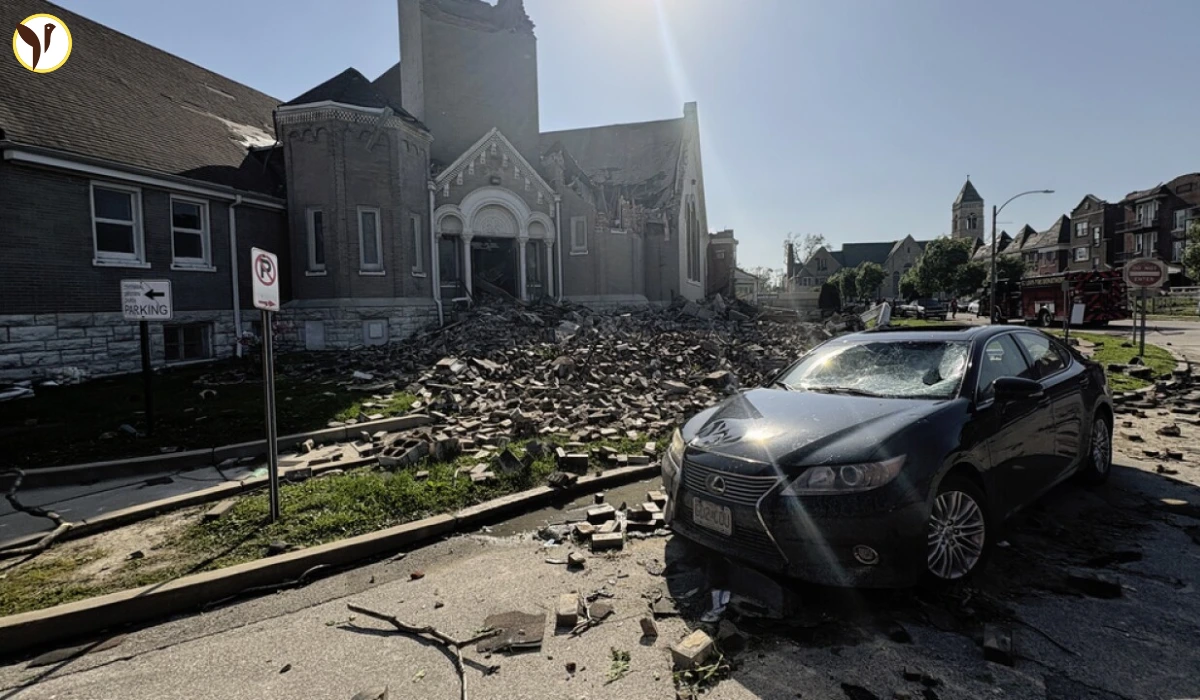Real people. Real heartbreak. Real hope.
⚠️ When the Sky Turned on Us
On May 16, 2025, a devastating tornado struck St. Louis, tearing through neighborhoods from Clayton to Forest Park and leaving behind more than just physical destruction. This wasn’t just a weather event — it was a citywide trauma.
In just minutes, homes were destroyed, power was lost, and lives were forever changed.
💔 5 Lives Lost, Thousands Left Picking Up the Pieces
At least five people died. Entire families were displaced. About 5,000 properties were damaged. Over 100,000 people lost power as power lines snapped and transformers exploded. It was the kind of tornado damage St. Louis hadn’t seen in years.
And yet — amid all this, something else emerged: resilience.
👩🚒 Local Heroes Stepped In Before FEMA Did
The sirens had barely stopped when first responders, volunteers, and neighbors stepped up.
A man with a chainsaw cleared a path to his elderly neighbor’s door. A teenage girl pulled a family dog from under fallen debris. Community heroes didn’t wait to be asked — they just showed up.
These aren’t just headlines. These are people — your people.
🛑 City Declares Emergency — and the Rebuild Begins
Mayor Cara Spencer declared a state of emergency, and a curfew was put in place in the hardest-hit areas. Crews are still working day and night to restore power and repair roads.
The St. Louis recovery efforts have kicked off with urgency — but they’ll need time, resources, and above all, community.
🫶 St. Louis Didn’t Fall. It Rose.
In times like these, Missouri’s spirit shines. People opened homes, churches became shelters, and kitchens that usually serve coffee started handing out hot meals.
And while storm survivor stories are still coming in, one thing’s clear: this city might bend, but it never breaks.
💡 Tornado Preparedness Is No Longer Optional
This event reminded us why we need reliable tornado shelters in Missouri, early warning systems, and stronger infrastructure. Nature may be unpredictable, but our preparation doesn’t have to be.
If you live in the Midwest — whether in St. Louis, Kansas City, or anywhere in between — now is the time to review your emergency plans.
📸 What’s Next for St. Louis?
We rebuild. Slowly. Painfully. Together.
Because this city isn’t made of buildings — it’s made of people.
So if you were affected, we see you. If you want to help, volunteer, donate, or simply show up. And if you're just reading this — remember, every community is one storm away from needing the same.
🧭 Final Words
No one ever thinks their zip code will trend under “breaking news.” But here we are.
What matters most now is what happens next.
Let’s keep showing up for each other. Let's stay #MidwestStrong.


/content/stories/thumb/thumb691c6883320f32.63242210.webp)
/content/stories/thumb/thumb691c595f806732.26187823.webp)
/content/stories/thumb/thumb691c49335a4bc3.80041055.webp)
/content/stories/thumb/thumb691c3c61988637.81812691.webp)
/content/stories/thumb/thumb691c2288109e71.34074074.webp)


